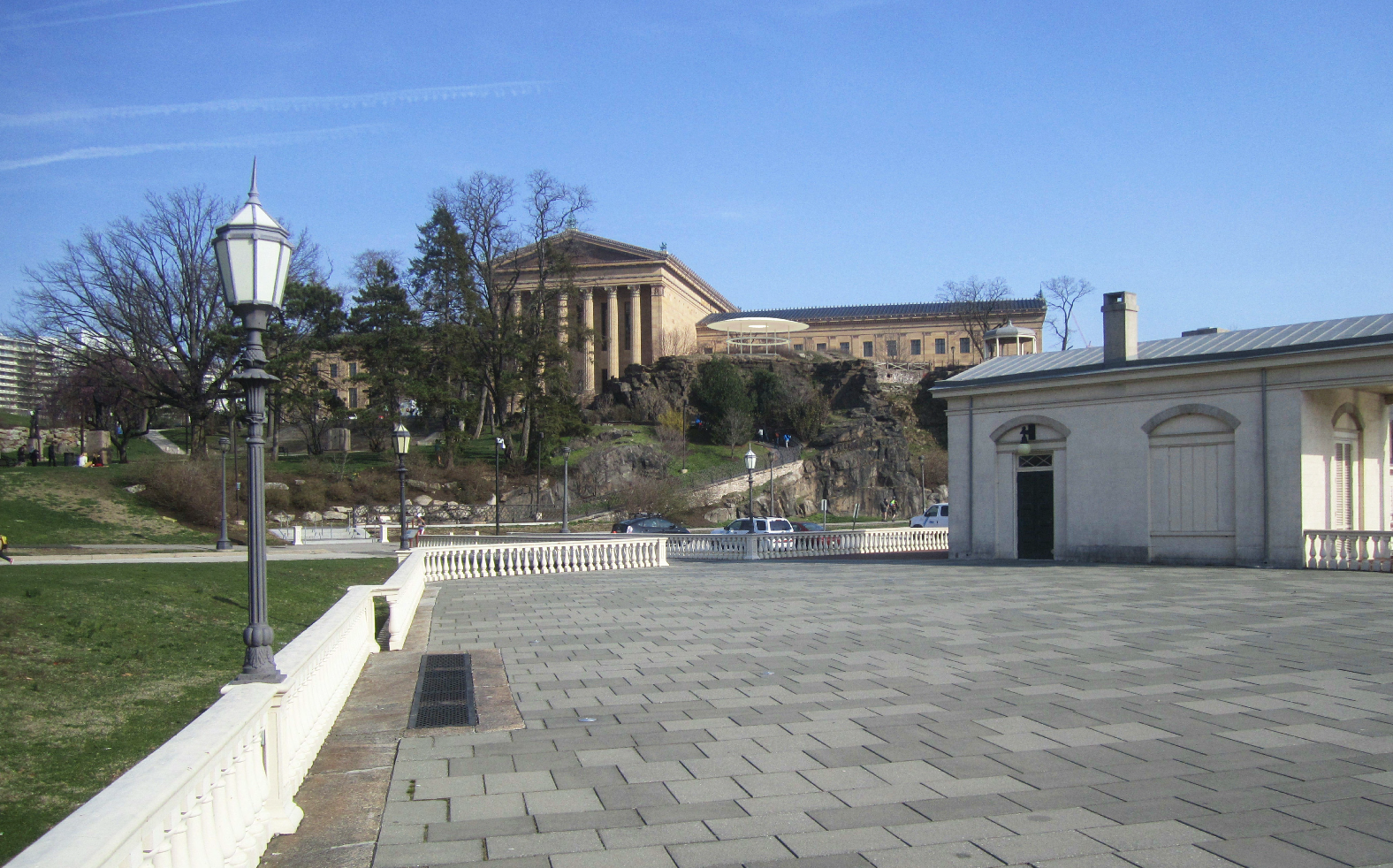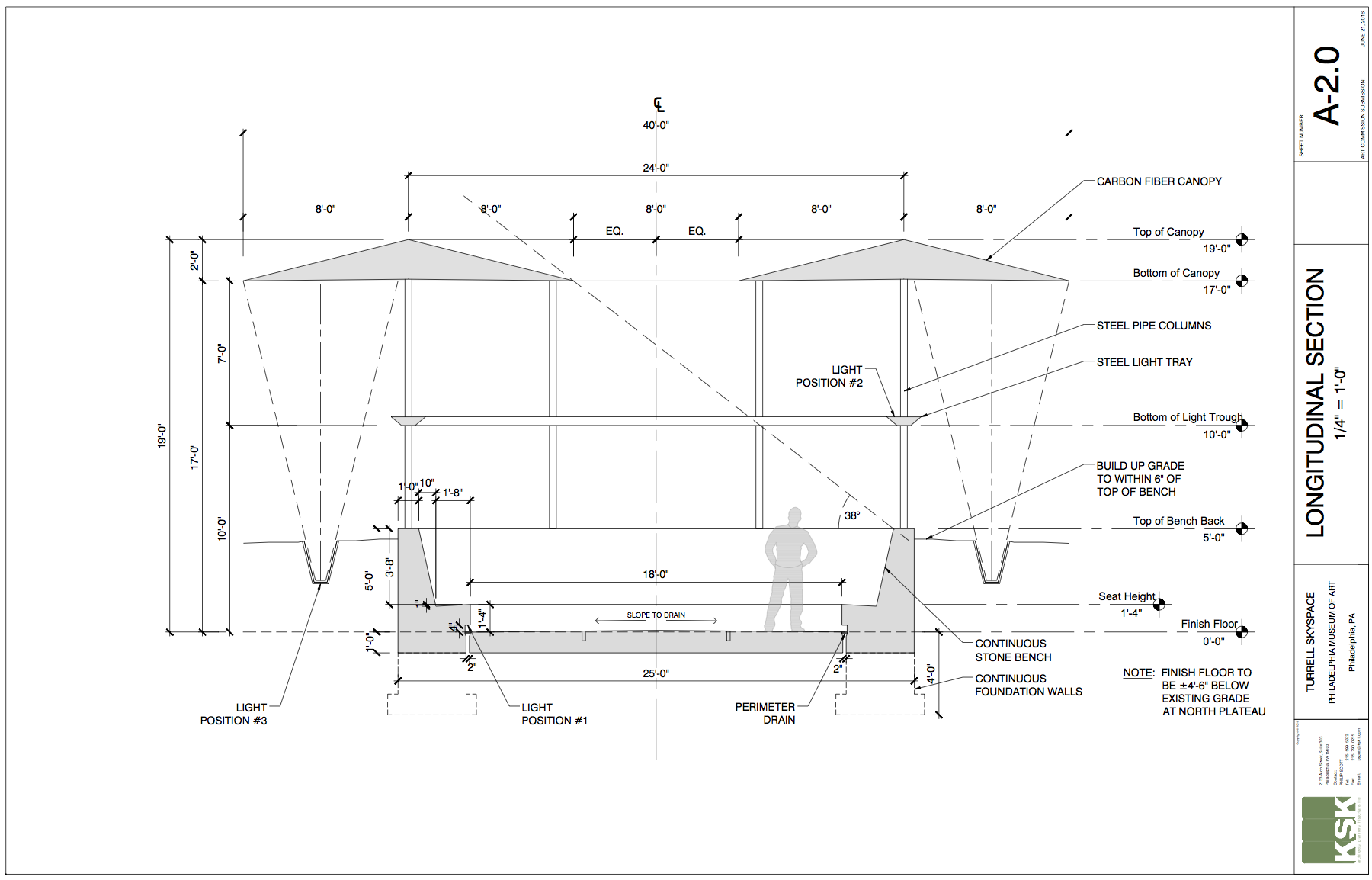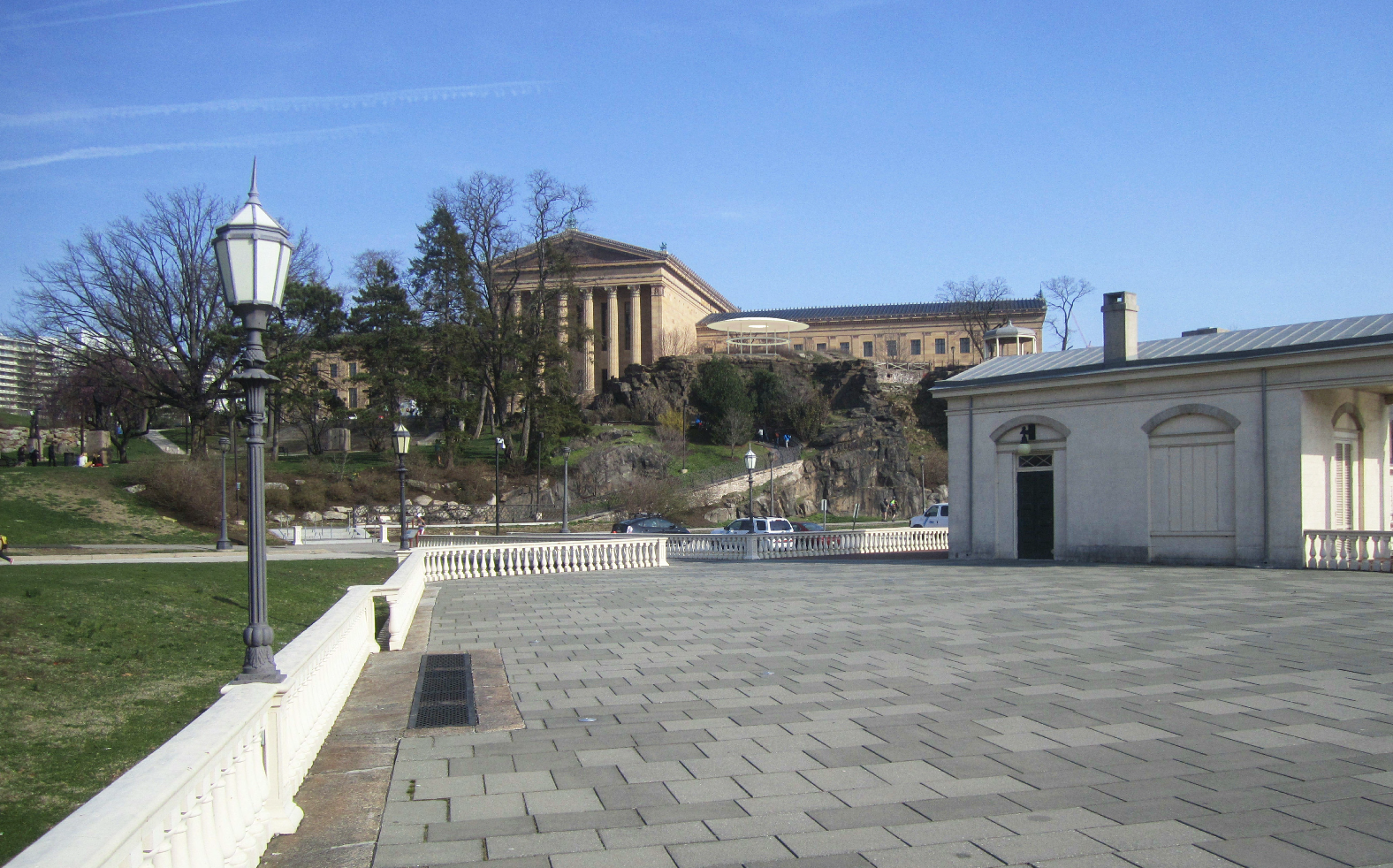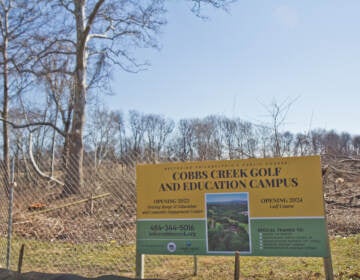New Turrell ‘Skyspace’ planned by Philadelphia Museum of Art

Behind the Philadelphia Museum of Art, overlooking the falls and Fairmount Water Works below, there are two gazebos. Now the museum is proposing installation of a third, 21st century addition to this landscape.
The museum has engaged artist James Turrell to create one of his famed “Skyspace” works for the rugged North Plateau. Philadelphia already has a Turrell Skyspace, built at the new Chestnut Hill Meeting House, which is one of 80 Skyspaces scattered across the globe.
At this early stage the proposal has gone before both the Art Commission and Historical Commission, each granting conceptual approval to the project this month.
Skyspaces are artworks that explore how we perceive light, space, and color, explained Timothy Rub, director of the museum, to both committees. Their purpose is “exalting the art of perception” bound up in an architectural form, Rub said.
Turrell’s Skyspaces vary in form and scale, but are particularly proportioned rooms, and all have an oculus to the sky. At sunup and sundown they are programmed with a light installation, to be viewed looking skyward, in quiet contemplation.
The design firm KSK is working with the museum on the project, and has developed a design in collaboration with Turrell aiming to be contextual to the site. The museum’s Skyspace would be a minimalist open oval-shaped pavilion, a nod to the existing gazebos nearby, covered with a canopy uplit with LED lighting, which would be most active at dawn and dusk when a lighting program would animate the underside of the canopy for the view skyward. It would accommodate about 24 people on a curved stone bench.
The proposed Skyspace’s interior benches would be sunken into the rocky promontory between the two existing gazebos. KSK’s Philip Scott said he hesitated to compare it to a root canal, but that’s the basic idea, geared at minimizing the impact of the Skyspace while still permitting clear views.
Both commissions asked why this location, in such an iconic landscape at such a highly visible site, was selected.
Rub said the museum worked with Turrell to consider other sites at the museum, including attic space and an area in the forthcoming new galleries to be built under the steps facing the Parkway. This site was selected in no small part because of its unobstructed view to the sky and its dramatic setting.
The Historical Commission’s Emily Cooperman noted that this is a landscape of extraordinary historic value, which is crucial as context for the two historic sites – the museum and Water Works. The context may be an asset but a Skyspace, she said, is an inward experience. Plus, she argued, the pavilion as presented stands out strongly.
“Its place in this iconic landscape has to be dealt with very carefully,” Cooperman said, adding that concern also placed the concept of liminality into play. How will visitors approach this space, progressing through the landscape?
Historical Commissioner John Mattioni was a lonely voice of dissent, saying the design looked totally out of place and in contrast to the museum’s setting.
Both commissions objected to using a bright white finish for the Skyspace’s components, and asked for more information to understand the impact of the canopy. Could it be colored something other than white? Could it be lit? How visible would it really be from the Schuylkill Expressway side? Could it dissolve? Should it?
Art Commission Chair Alan Greenberger said it was his instinct to try to “subdue” the gazebo’s columns and light ring. He, and other commissioners, questioned how the flow of visitors to this constrained space would be managed.
Rub said the goal would be to make this Skyspace a wonderful addition not just to the museum’s collection but to the landscape of Fairmount Park as well.
Both commissions granted conceptual approval, allowing the proposal to advance in development, and both expect to see more detailed renderings and models as designs progress.
WHYY is your source for fact-based, in-depth journalism and information. As a nonprofit organization, we rely on financial support from readers like you. Please give today.







